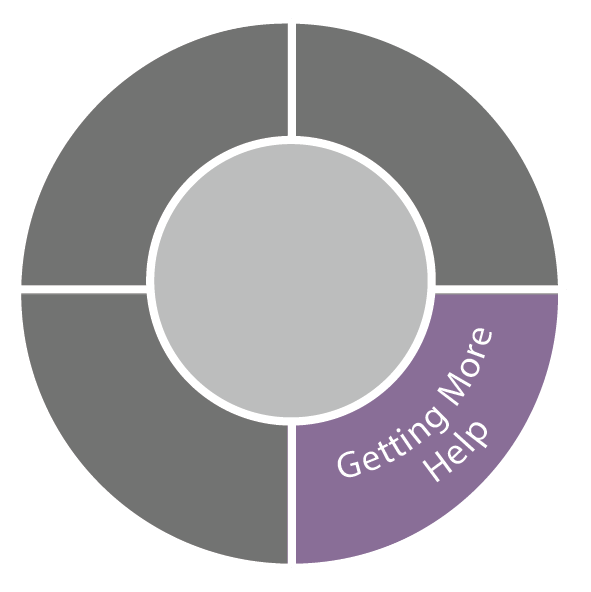
This is not conceptually different from Getting Help. It is a separate needs-based grouping only because need for extensive resource allocation for a small number of individuals may require particular attention and coordination from those providing services across the locality.
It is for each community to determine the resource allocation threshold that defines Getting More Help from Getting Help.
There are no hard and fast rules as to who needs More Help but the following are frequent indicators:
• the child or young person is completely unable to participate age appropriately in daily activities in at least one context (e.g. school, home, with peers)
• they may even be unable to function in all domains (e.g. staying at home or in bed all day without taking part in social activities)
• they need constant supervision (due to their level of difficulties they are no longer managing self-care) and experience distress on a daily basis.
This grouping also comprises those children, young people and families who would benefit from focused, evidence-based interventions, with clear aims, and criteria for assessing whether these aims have been achieved.
It encompasses those young people and families who would benefit from extensive intervention.
This grouping might include children with a range of overlapping needs that mean they may require greater input, such as the coexistence of autistic spectrum disorder (ASD), major trauma or broken attachments.
Resources
- Getting More Help 7 Minute Briefing
- THRIVE Framework Animation: Look out for the Getting More Help section of the animation to see how children and young people have brought this needs based grouping to life.
Getting More Help i-THRIVE Implementation Stories
These implementation stories provide examples of how sites are delivering Getting More Help.
- Haringey’s First Step Service Model Aligned with the THRIVE Framework
- The Waltham Forest Long Term Conditions Clinic
- Aligning Greater Manchester’s Eating Disorder Pathway to the THRIVE Framework needs based groupings
- Minding the Gap transitions service in Camden
- How the More than Mentors Peer Mentoring Programme is aligned with the THRIVE Framework for system change
To access direct support from the programme team to assist with the implementation of the THRIVE Framework locally, please contact the team at ithriveinfo@tavi-port.nhs.uk.